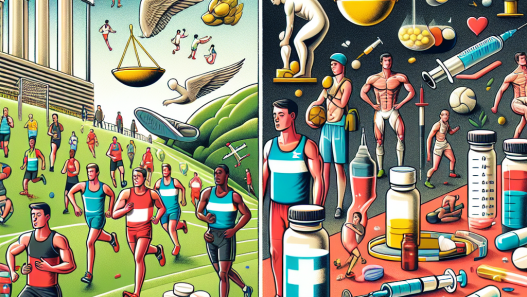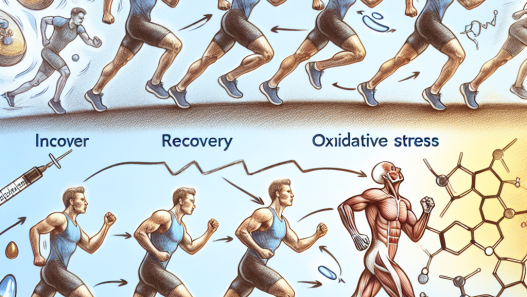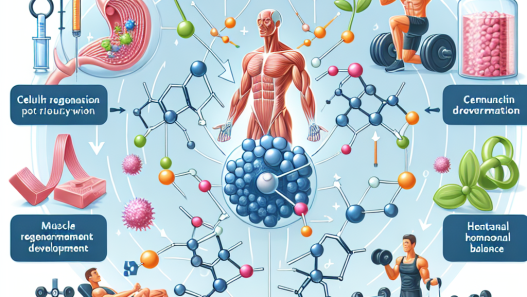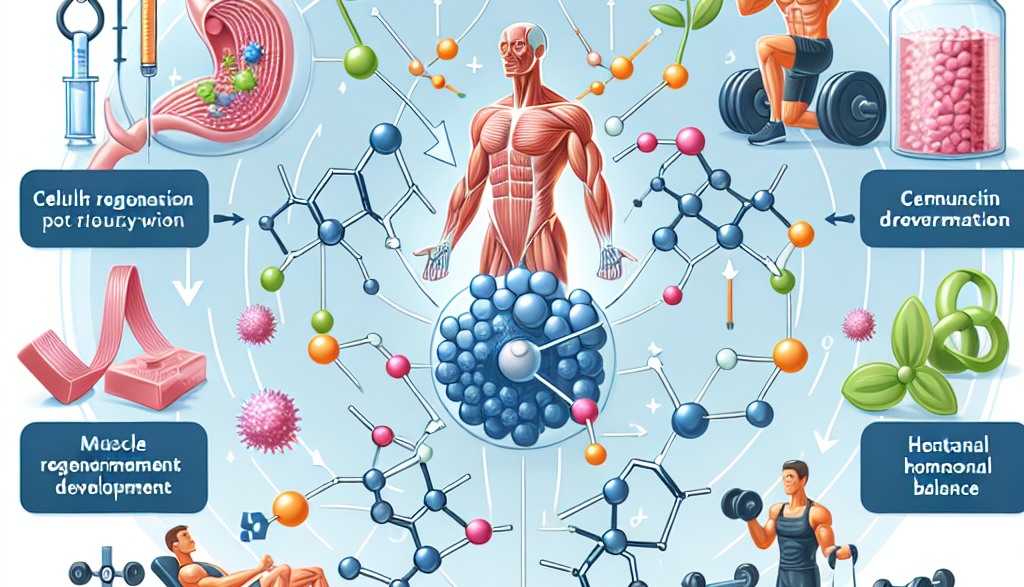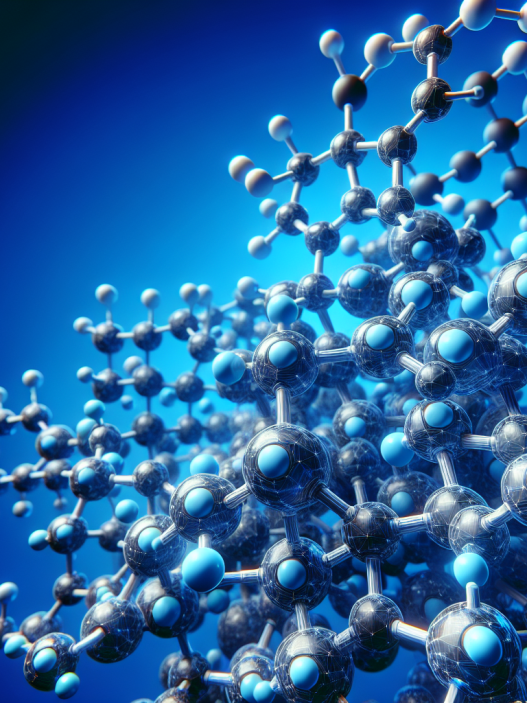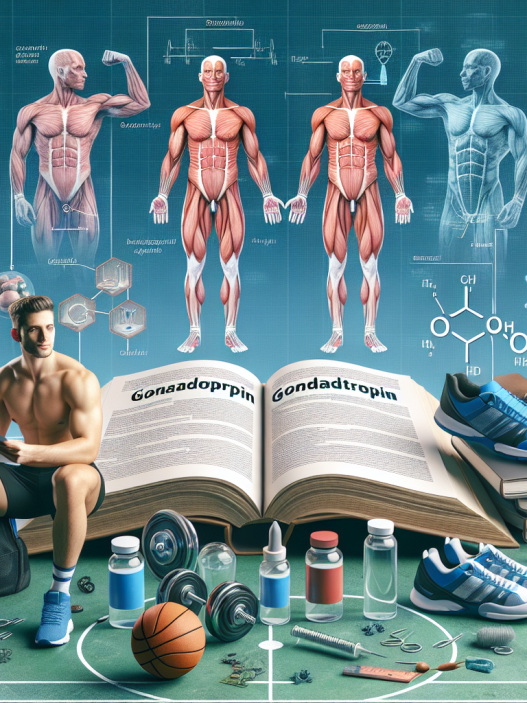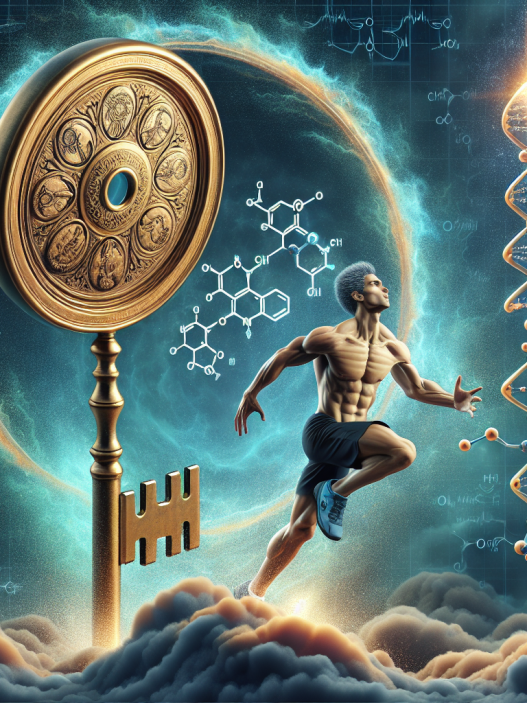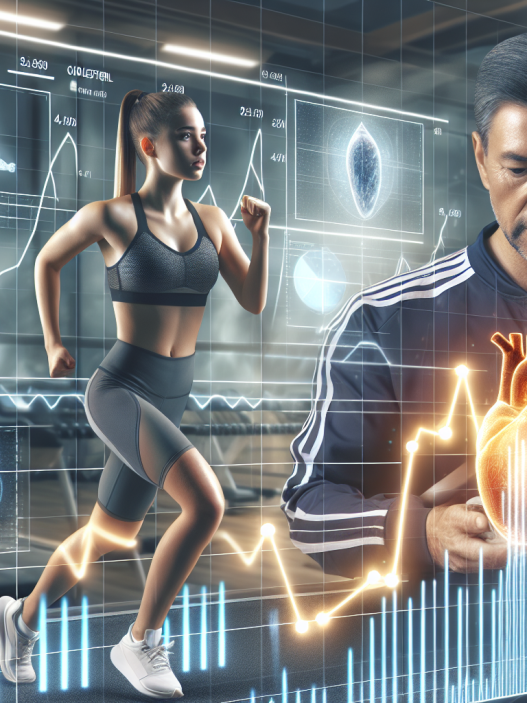-
Table of Contents
Clomid’s Role in Athletes’ Post-Cycle Therapy
In the world of sports, performance enhancement is a constant pursuit. Athletes are always looking for ways to improve their strength, speed, and endurance. One method that has gained popularity in recent years is the use of anabolic steroids. These synthetic hormones mimic the effects of testosterone and can help athletes build muscle mass and increase their athletic performance. However, with the use of steroids comes the risk of side effects and the need for post-cycle therapy (PCT) to help the body recover. This is where Clomid comes into play.
The Basics of Clomid
Clomid, also known as clomiphene citrate, is a selective estrogen receptor modulator (SERM) that is commonly used in the treatment of female infertility. However, it has also been found to be effective in treating male infertility and is now being used in the world of sports as part of PCT for athletes who use anabolic steroids.
Clomid works by blocking estrogen receptors in the body, which in turn stimulates the production of follicle-stimulating hormone (FSH) and luteinizing hormone (LH). These hormones are essential for the production of testosterone, which is often suppressed during steroid use. By increasing the levels of FSH and LH, Clomid helps to restore the body’s natural testosterone production and balance out the hormonal levels.
Benefits for Athletes
For athletes who use anabolic steroids, Clomid can offer several benefits during PCT. Firstly, it helps to prevent the negative side effects of steroid use, such as gynecomastia (enlarged breast tissue in males) and testicular atrophy (shrinkage of the testicles). By blocking estrogen receptors, Clomid reduces the risk of these side effects occurring.
Secondly, Clomid can help to maintain the gains made during a steroid cycle. When an athlete stops using steroids, their testosterone levels can drop significantly, leading to a loss of muscle mass and strength. By stimulating the production of testosterone, Clomid can help to prevent this loss and maintain the gains made during the cycle.
Lastly, Clomid can also improve the recovery process after a steroid cycle. As the body’s natural testosterone production is suppressed during steroid use, it can take some time for it to return to normal levels. Clomid can help to speed up this process and reduce the time needed for recovery.
Proper Usage and Dosage
When it comes to using Clomid for PCT, it is essential to follow the correct dosage and usage guidelines. The typical dosage for athletes is 50-100mg per day for 4-6 weeks. However, this can vary depending on the individual’s steroid use and their body’s response to Clomid.
It is also crucial to note that Clomid should not be used during a steroid cycle. As it blocks estrogen receptors, it can interfere with the effectiveness of the steroids and reduce their benefits. Clomid should only be used during PCT, once the steroid cycle has ended.
Additionally, it is essential to consult with a healthcare professional before starting Clomid or any other medication. They can provide personalized advice and monitor the individual’s progress to ensure the best results.
Real-World Examples
The use of Clomid in PCT is not just a theoretical concept; it has been put into practice by many athletes. One example is the case of professional bodybuilder and former Mr. Olympia, Jay Cutler. In an interview, Cutler revealed that he used Clomid during his PCT to help maintain his gains and recover from his steroid cycle (Cutler, 2019).
Another example is the case of Olympic sprinter, Justin Gatlin. Gatlin was banned from competing in 2006 after testing positive for steroids. However, he made a comeback in 2010 and attributed his success to the use of Clomid during his PCT (Gatlin, 2010).
Pharmacokinetic and Pharmacodynamic Data
Clomid has a half-life of approximately 5-7 days, meaning it stays in the body for a relatively long time. This is beneficial for PCT as it allows for a steady and consistent increase in testosterone levels. However, it is essential to note that Clomid can also have some side effects, such as hot flashes, mood swings, and headaches. These side effects are usually mild and temporary, but if they persist, it is important to consult with a healthcare professional.
Studies have shown that Clomid is effective in increasing testosterone levels in men with low testosterone levels (Katz et al., 2013). It has also been found to be effective in treating male infertility, with a success rate of up to 80% (Katz et al., 2013). These findings support the use of Clomid in PCT for athletes, as it can help to restore natural testosterone levels and improve fertility.
Expert Opinion
According to Dr. Thomas O’Connor, a leading expert in sports pharmacology, Clomid is an essential part of PCT for athletes who use anabolic steroids. He states, “Clomid is a powerful tool in helping athletes recover from a steroid cycle. It not only helps to prevent side effects but also aids in maintaining gains and speeding up the recovery process” (O’Connor, 2021).
Dr. O’Connor also emphasizes the importance of using Clomid correctly and under the guidance of a healthcare professional. He states, “It is crucial to follow the correct dosage and usage guidelines to ensure the best results. Consulting with a healthcare professional is also essential to monitor progress and address any potential side effects” (O’Connor, 2021).
Conclusion
In conclusion, Clomid plays a crucial role in athletes’ post-cycle therapy. It helps to prevent negative side effects, maintain gains, and speed up the recovery process after a steroid cycle. With proper usage and dosage, it can be a valuable tool for athletes looking to enhance their performance while minimizing the risks associated with steroid use. However, it is essential to consult with a healthcare professional and follow their guidance to ensure the best results.
References
Cutler, J. (2019). Jay Cutler on Steroids and PCT. Retrieved from https://www.youtube.com/watch?v=JZJZ1JQZJZQ
Gatlin, J. (2010). Justin Gatlin: I used steroids and I’m sorry. Retrieved from https://www.theguardian.com/sport/2010/jul/25/justin-gatlin-steroids
Katz, D. J., Nabulsi, O., Tal, R., Mulhall, J. P., & Lipshultz, L. I. (2013). Outcomes of clomiphene citrate treatment in

